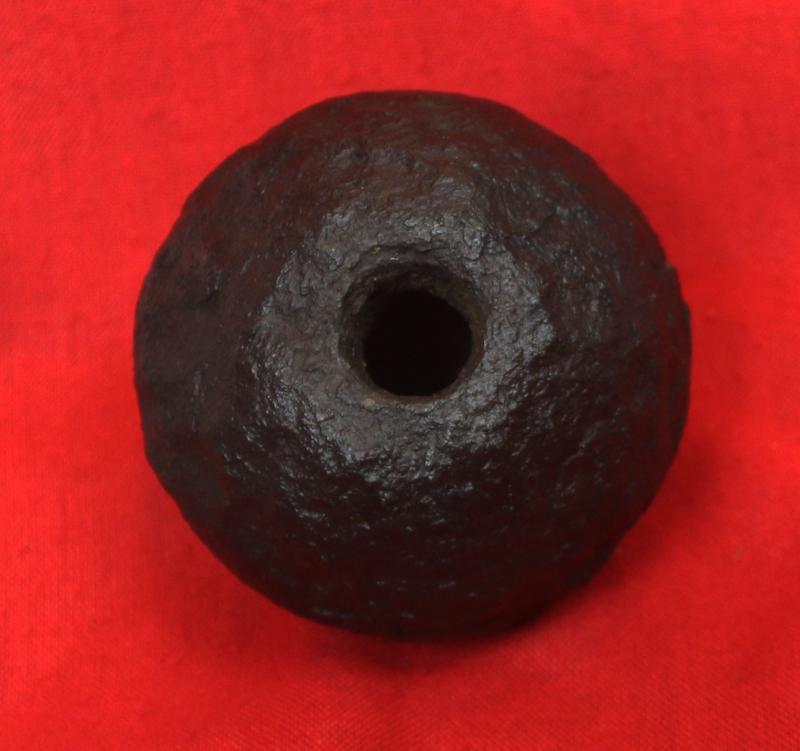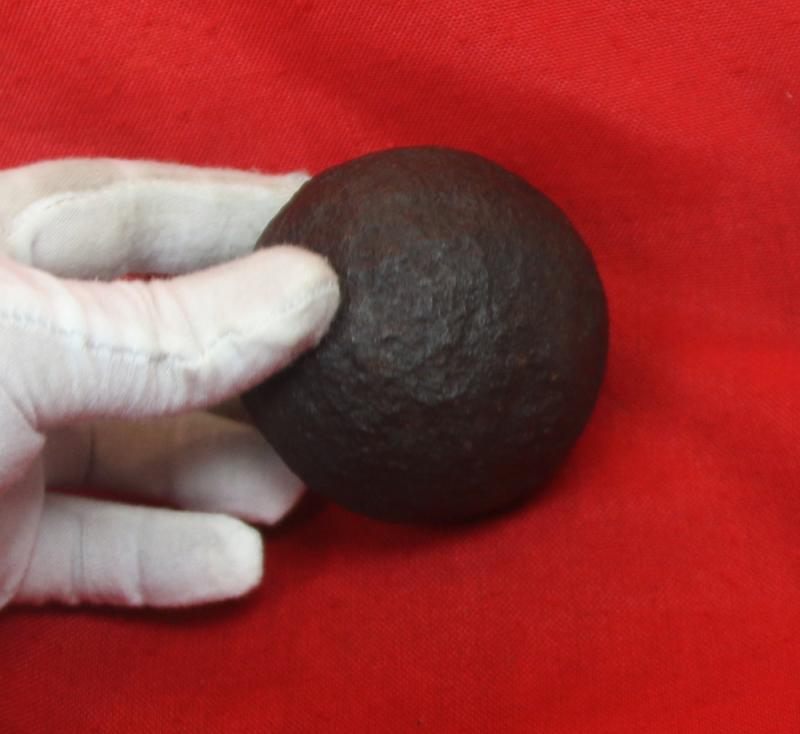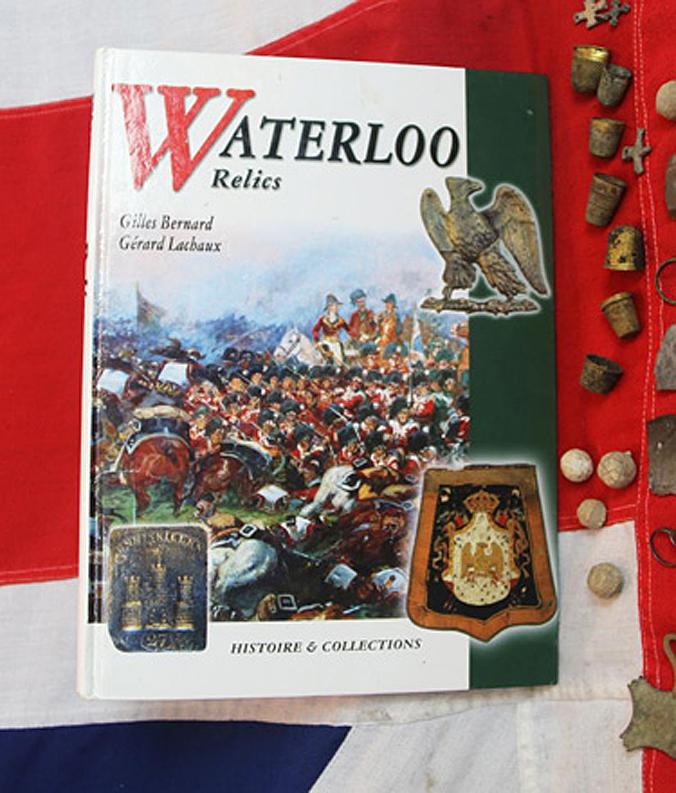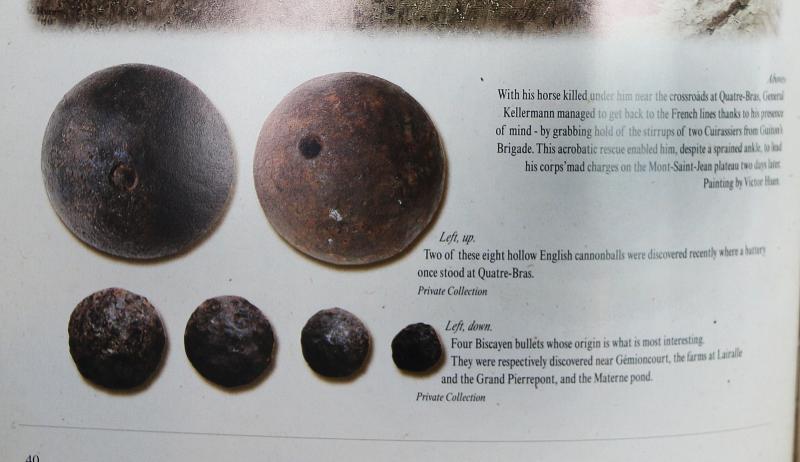A Rare King George IIIrd Grenade Recovered From The Field of The Battle at Waterloo ...
Recovered alongside the farm’s cast iron fireback and some relic items of combat, soldiers thimbles plus grenades, cannon balls etc. discovered around La Haye Sainte (named either after Jesus Christ's crown of thorns or a bramble hedge round a field nearby). We acquired 3 from Waterloo, this is the last one, the first sold, the second is on reserve. We may never get any again
It is a walled farmhouse compound at the foot of an escarpment on the Charleroi-Brussels road in Belgium. It has changed very little since it played a crucial part in the Battle of Waterloo on 18 June 1815.
La Haye Sainte was defended by about 400 King's German Legion troops during the Battle of Waterloo. They were hopelessly outnumbered by attacking French troops but held out until the late afternoon when they retired because their ammunition had run out. If Napoleon Bonaparte's army had captured La Haye Sainte earlier in the day, almost certainly he would have broken through the allied centre and defeated the Duke of Wellington's army.
The capture of La Haye Sainte in the early evening then gave the French the advantage of a defensible position from which to launch a potentially decisive attack on the Allied centre. However, Napoleon was too late—by this time, Blücher and the Prussian army had arrived on the battlefield and the outnumbered French army was defeated.
Strategic importance
A view of the battlefield from the Lion's mound. On the top right are the buildings of La Haye Sainte. This view looks east, with Allied forces behind the road to the left (north) and French forces out of shot to the right(south)
The road leads from La Belle Alliance, where Napoleon had his headquarters on the morning of the battle, through where the centre of the French front line was located, to a crossroads on the ridge which is at the top of the escarpment and then on to Brussels. The Duke of Wellington placed the majority of his forces on either side of the Brussels road behind the ridge on the Brussels side. This kept most of his forces out of sight of the French artillery.
During the night from the 17th to the 18th, the main door to the courtyard of the farm was used as firewood by the occupying troops. Therefore, when the King's German Legion (KGL) was stationed in the farm at the morning of the battle they had to hastily fortify La Haye Sainte.
The troops were the 2nd Light Battalion KGL commanded by Major Georg Baring, and part of the 1st Light Battalion KGL. During the battle, they were supported by the 1/2 Nassau Regiment and the light company of the 5th Line Battalion KGL. The majority of these troops were armed with the Baker rifle with grooved barrels, as opposed to the normal Brown Bess musket of the British Army. The French troops also used muskets which were quicker to load than the Baker rifle but the latter was more accurate and had about twice the range of a musket.
Both Napoleon and Wellington made crucial mistakes about La Haye Sainte as it was fought over and around during most of the day. Napoleon failed to allocate enough forces to take the farm earlier in the day while Wellington only realised the strategic value of the position when it was almost too late.
The grenade is spherical and made of cast iron. The first grenades were small iron spheres filled with gunpowder fused with a length of slow-match. These types of grenades weighed around 1.5 kg and were equivalent in size to a four-pound cannonball (Crowdy 2015). These types of hand grenades were used during land combat and on Naval vessels. One of the more common munitions aboard warships during the late 18th century and early 19th century was the hand grenade, used for close quarter action. Examples were recovered from HMS Pomone that also had their original fuse in place (Henry 2004). Hand grenades of this kind were used during the Napoleonic era (1799−1815) and were used by both the French and British.
Grenadiers were a specific type of soldier during the late 18th century to the early 19th century, in the earliest days they were tasked with throwing grenades during combat. They had to be at the forefront of the fight to light the fuse and throw at the appropriate moment to minimize the opportunity for the enemy to throw the grenade back. They were selected for being strong, tall and skilled enough to throw them far enough away so as not to harm themselves or their comrades. Such skills led to grenadiers being regarded as an elite fighting force and they were easily identified by their head-gear from ordinary musketeers. The uniform included a belt tube that held the match for lighting the fuse, a feature that was retained in later grenadier uniforms.
Peter Goodwin, a Historical Maritime Consultant and previous curator of HMS Victory confirmed that based on its size, the photographed with size scale grenade, is certainly a hand grenade dating to the Napoleonic era. From an article in Wessex Archaology.
Photo in the gallery {from the above article} of a recovered Napoleonic Wars grenade, almost identical to ours, but still with its fuse plug intact that was recovered from HMS Pomone, as detailed above by Peter Goodwin, but shown by us to show exactly how this grenade would have looked before it was thrown, but failed to detonate, hence it survived intact to be recovered from La Haye Sainte, but now deeply pitted, and empty, with a two inch long thin surface crack but still very sound.
References
Crowdy, T. 2015 Napoleon's Infantry Handbook. Barnsley, Pen and Sword
Every single item from The Lanes Armoury is accompanied by our unique Certificate of Authenticity. Part of our continued dedication to maintain the standards forged by us over the past 100 years of our family’s trading, as Britain’s oldest established, and favourite, armoury and gallery.
Last photo in the gallery of two English hollow cast cannon balls found at and from Quatre-Bras, in the Relics of Waterloo book, plus some Biscayan bullets,very large round shot used in very large calibre blunderbuss type guns used by the French at Waterloo and Quatre-Bras.
We have a hollow cast cannon ball to add to the site from a find at Waterloo and a Biscayan round shot
Code: 25043
395.00 GBP










